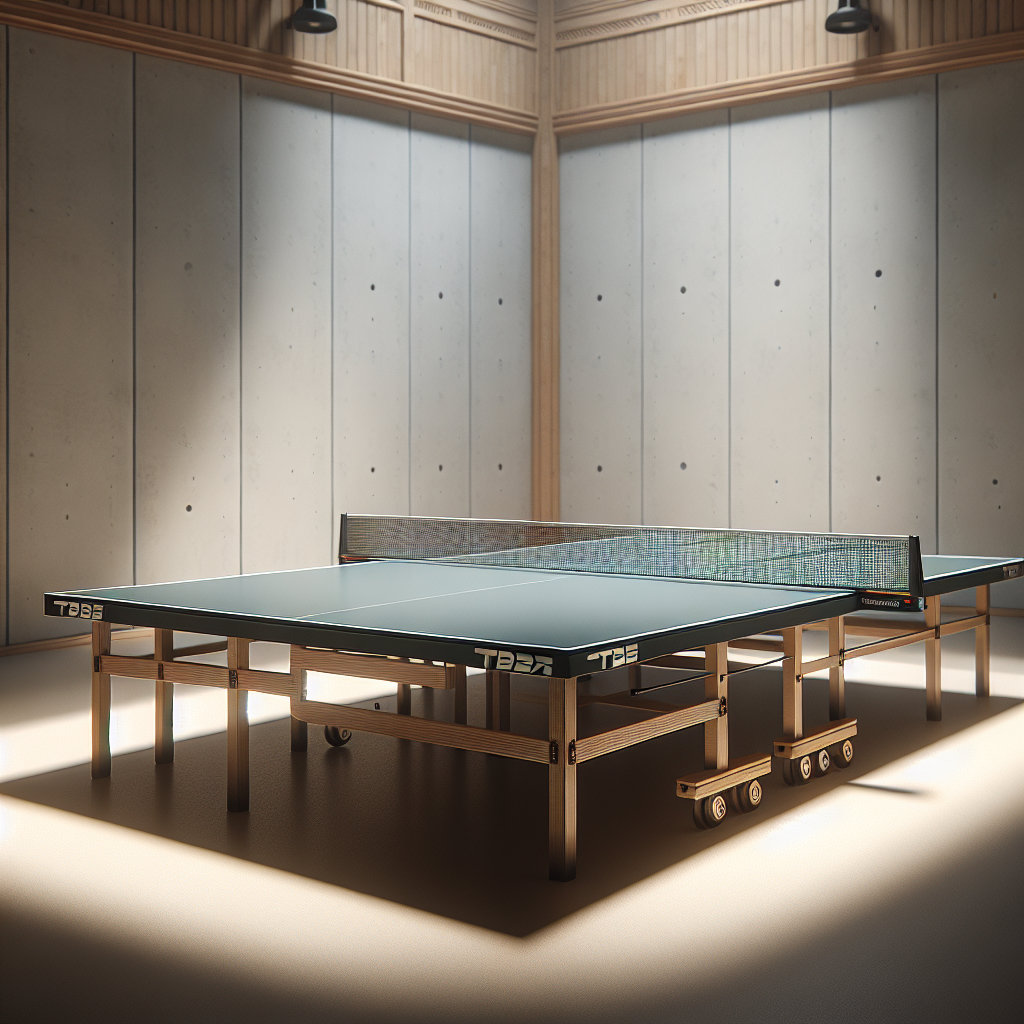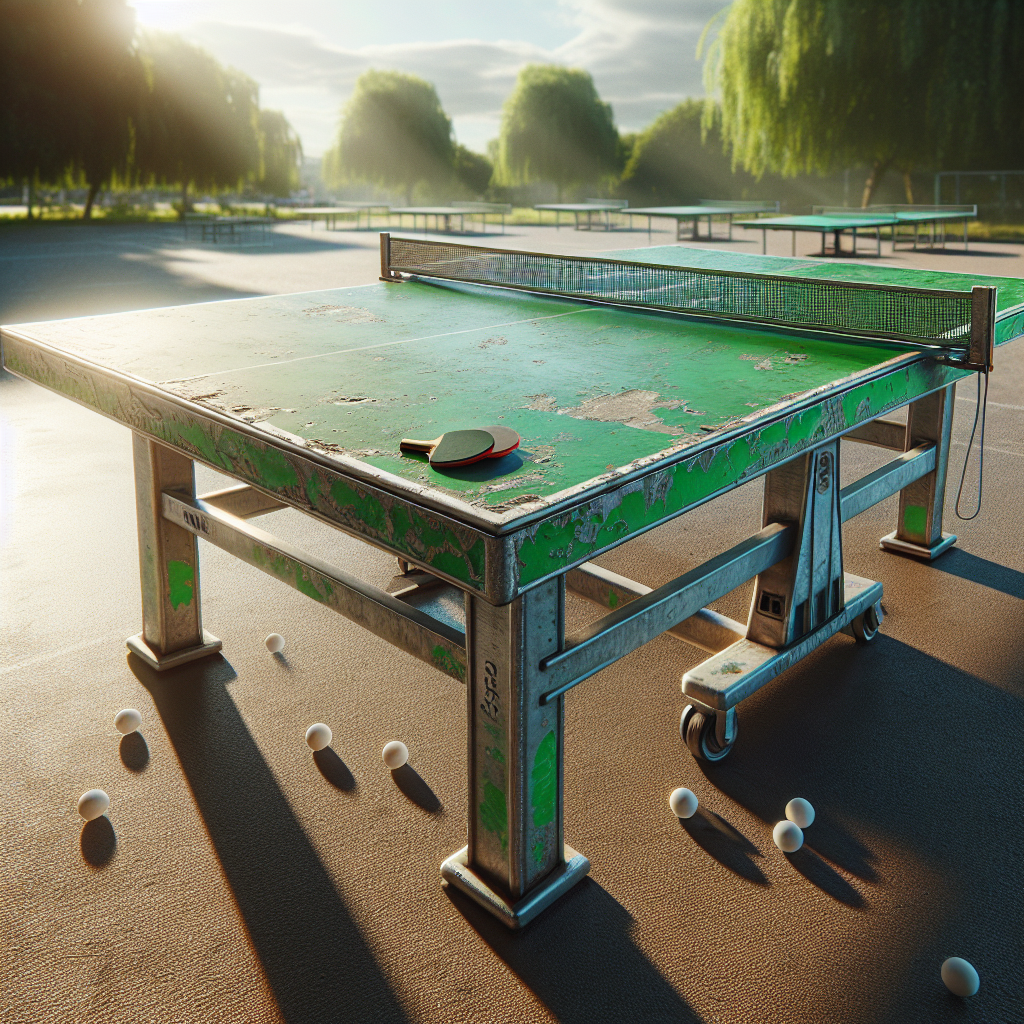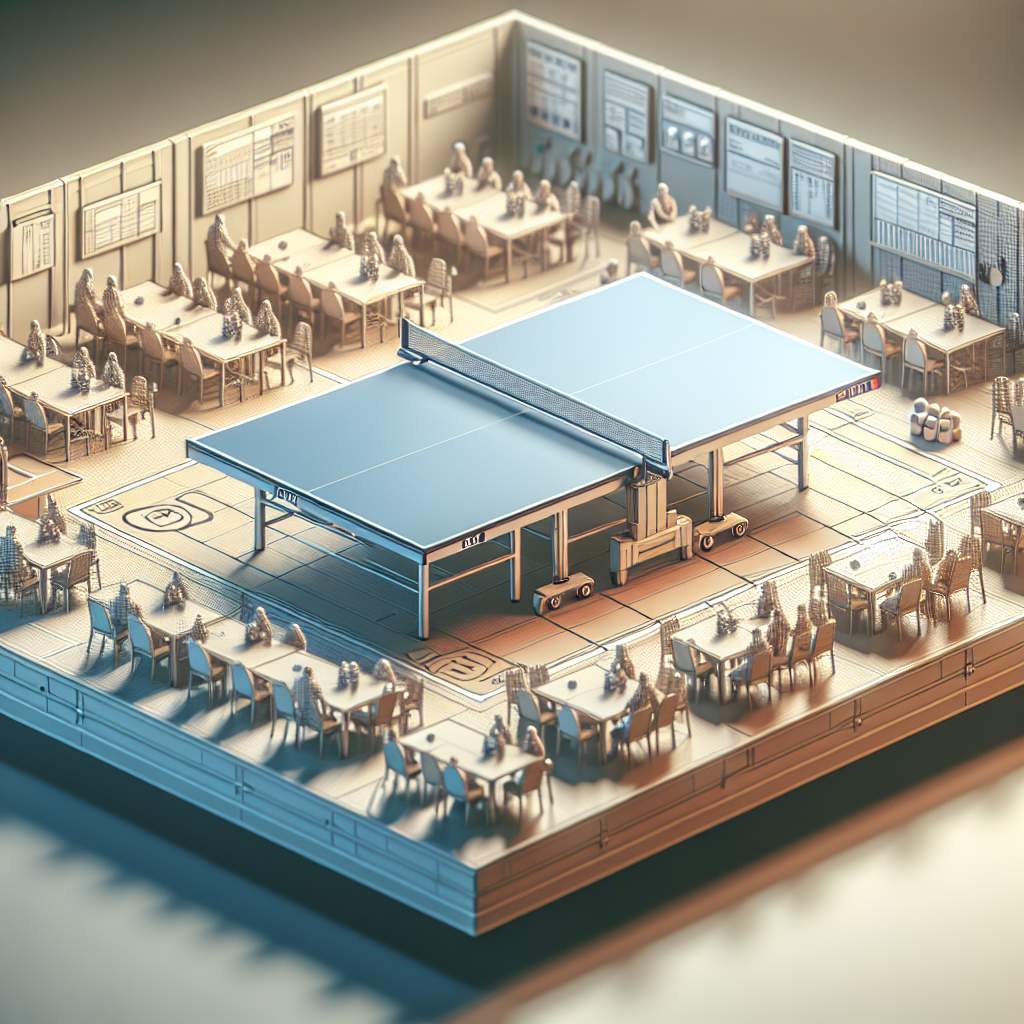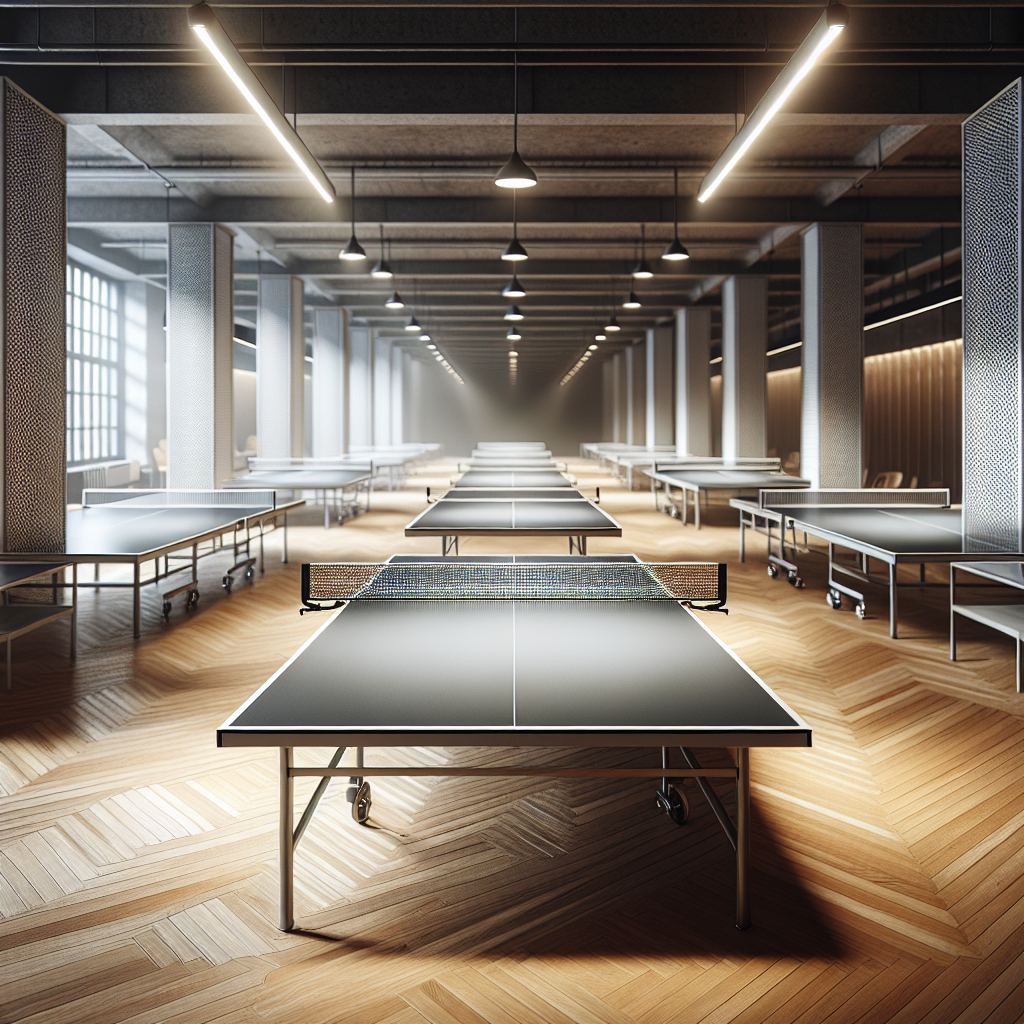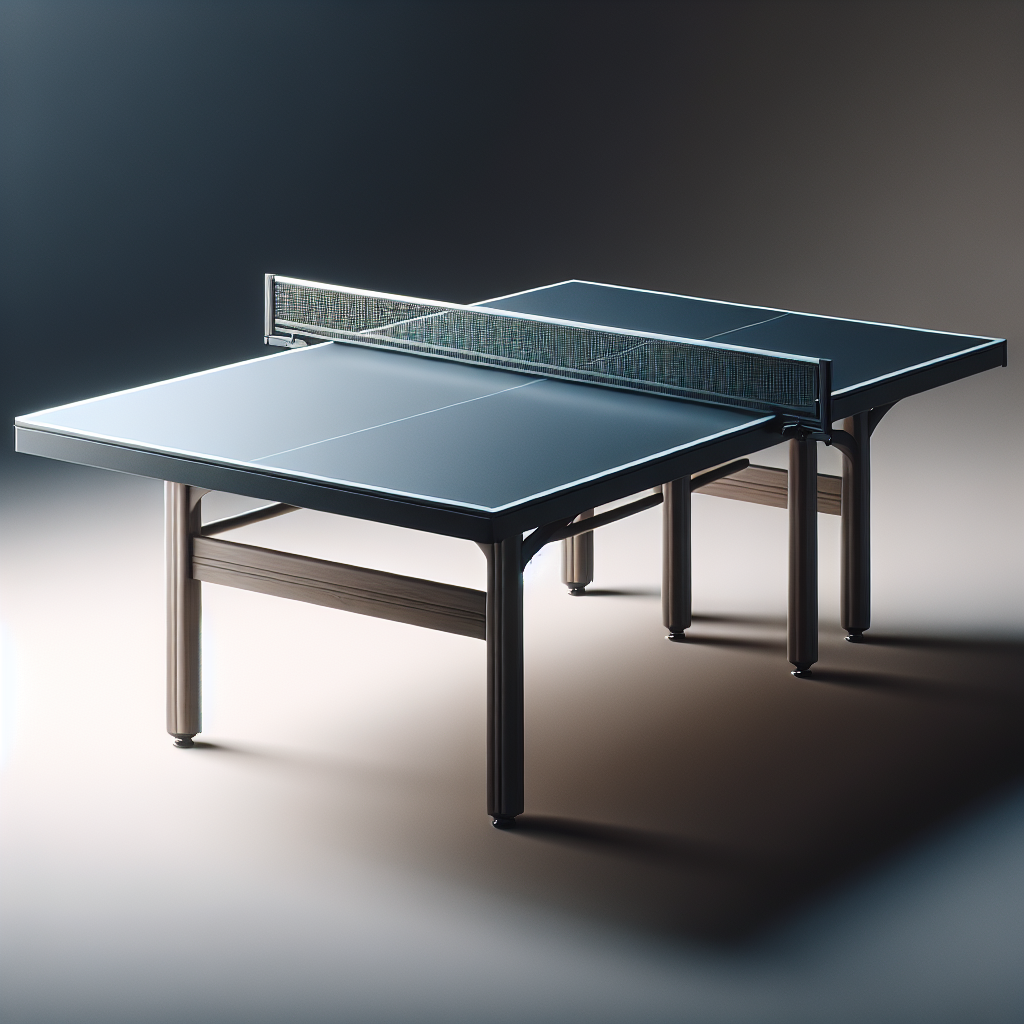Understanding Ping Pong Tables
When it comes to the game of ping pong, having the right table is essential for an optimal playing experience. Understanding the features of regulation tables and the different types available can help you make an informed decision when choosing a ping pong table.
Features of Regulation Tables
Regulation ping pong tables adhere to specific standards set by the International Table Tennis Federation (ITTF). These tables are designed to provide a consistent playing surface and dimensions that meet the requirements of professional play.
Some key features of regulation tables include:
- Tabletop Dimensions: Regulation ping pong tables have a length of 9 feet (2.74 meters), a width of 5 feet (1.52 meters), and a height of 2.5 feet (76 centimeters). These dimensions ensure a standardized playing area for competitive matches.
- Tabletop Thickness: The tabletop of a regulation table should have a minimum thickness of 0.75 inches (19 millimeters) to ensure proper bounce and ball response.
- Table Surface Coating: To enhance the playing experience and provide consistent ball bounce, regulation tables often feature a special coating, such as a high-quality finish or a specific texture.
Types of Ping Pong Tables
While regulation tables are designed for professional play, there are different types of ping pong tables available to suit various needs:
- Indoor Ping Pong Tables: These tables are designed for indoor use and are suitable for home, office, or club environments. They often feature a sturdy frame and a high-quality playing surface.
- Outdoor Ping Pong Tables: Built to withstand outdoor conditions, these tables are typically made of weather-resistant materials and have features like rust-resistant frames and waterproof tabletops. They are ideal for outdoor recreational areas or locations with limited indoor space (outdoor ping pong tables).
- Foldable Ping Pong Tables: These tables are designed to be easily folded and stored when not in use. They offer convenience and versatility, making them popular for recreational play at home or in smaller spaces (foldable ping pong tables).
- Mini Ping Pong Tables: Miniature versions of regulation tables, these compact tables are perfect for children or casual play. They are lightweight, portable, and can be set up on various surfaces.
- Ping Pong Table Conversion Tops: If you already have a suitable table, a conversion top can turn it into a ping pong table. These tops can be placed on any flat surface, allowing you to enjoy the game without the need for a dedicated table (ping pong table conversion tops).
Understanding the features of regulation tables and the different types available can help you select the best ping pong table for your needs. Whether you’re a professional player or simply enjoy the game for recreational purposes, there are options available to suit every skill level and playing environment. For a curated list of top-rated ping pong tables, visit our article on the best ping pong tables.
Regulation Size Specifications
When it comes to ping pong tables, it’s important to consider the regulation size specifications to ensure a fair and consistent playing experience. These specifications are set by various governing bodies, including the International Table Tennis Federation (ITTF), USA Table Tennis (USATT), European Table Tennis Union (ETTU), and Olympic Committee.
Length and Width Requirements
According to the ITTF Handbook for Match Officials: Table Tennis Rules, the standard regulation size for a ping pong table is 2.74 meters (9 feet) long and 1.525 meters (5 feet) wide. The table must have a rectangular shape and a playing surface that is uniformly dark-colored, usually green or blue. Additionally, the playing surface should have a matte finish to minimize glare and provide consistent ball bounce.
Height Considerations
The height of a regulation ping pong table is an important consideration to ensure fair play and proper ball trajectory. The table should have a height of 76 centimeters (2 feet 6 inches) from the ground to the playing surface. This measurement allows for a consistent and optimal playing experience for players of all skill levels.
It’s worth noting that these regulation size specifications may vary slightly depending on the governing body and the level of competition. For example, the USATT and ETTU may have specific requirements outlined in their official rules and regulations. It’s recommended to consult the specific guidelines provided by the governing body relevant to your location and level of play.
By adhering to the regulation size specifications, players can enjoy a consistent playing experience and ensure fair competition. Whether you’re setting up a table for recreational play or preparing for competitive matches, it’s important to select a ping pong table that meets these standards. For more information on ping pong tables, including different types and features, check out our article on best ping pong tables.
Next, let’s take a closer look at the materials and construction of ping pong tables to further enhance your playing experience.
Materials and Construction
When it comes to choosing a regulation size ping pong table, the materials used in its construction play a crucial role in the overall performance and durability of the table. In this section, we will discuss the tabletop materials and frame/leg construction commonly found in high-quality ping pong tables.
Tabletop Materials
The tabletop of a ping pong table is where the game is played, so it’s essential to select a material that offers a consistent bounce and durability. Here are some commonly used tabletop materials:
-
MDF (Medium-Density Fiberboard): MDF is a popular choice for ping pong table tops due to its smooth and even surface. It provides a reliable bounce and is resistant to warping. However, MDF may be prone to damage if exposed to moisture or excessive humidity.
-
Particleboard: Particleboard is another commonly used material for ping pong table tops. It is less expensive compared to MDF but may not offer the same level of durability or consistent bounce.
-
Wood Composite: Some high-end ping pong tables feature tabletops made from wood composite materials. These materials provide excellent durability, consistent bounce, and are resistant to warping. They are often used in professional tournament tables.
It’s important to note that the thickness of the tabletop can also impact the playing experience. Regulation size ping pong tables typically have a thickness of 0.75 inches (19mm) to 1 inch (25mm). Thicker tabletops tend to offer a more consistent and higher-quality bounce.
Frame and Leg Construction
The frame and leg construction of a ping pong table contribute to its stability and longevity. Here are some aspects to consider:
-
Frame Material: The frame of a ping pong table is typically made from steel or aluminum. Both materials offer excellent strength and stability. Steel frames are generally more robust and suitable for heavy-duty use, while aluminum frames are lighter and easier to move.
-
Leg Design: The legs of a ping pong table should provide stability and prevent wobbling during intense gameplay. Look for tables with sturdy, reinforced legs that have adjustable levelers to ensure even playing surface, especially on uneven floors.
-
Folding Mechanism: Many ping pong tables feature a folding design for easy storage and transport. The folding mechanism should be secure and allow for smooth folding and unfolding without compromising stability.
By considering the tabletop materials and frame/leg construction, you can choose a regulation size ping pong table that offers both durability and optimal playing conditions. Remember to check out our article on best ping pong tables for more detailed recommendations based on customer reviews and expert opinions.
Best Practices for Ping Pong Tables
To ensure the longevity and optimal performance of your ping pong table, it’s important to follow some best practices for maintenance, placement, and setup.
Maintenance Tips
Proper maintenance is essential to keep your ping pong table in top condition. Here are some maintenance tips to help you prolong the life of your table:
-
Clean the surface regularly: Remove dust, dirt, and debris from the table surface using a soft cloth or sponge. Avoid using abrasive cleaners that could damage the playing surface. For stubborn stains, use a mild detergent diluted in water.
-
Protect the surface: To prevent scratches and damage, always use a protective cover when the table is not in use. This will shield the surface from dust, moisture, and accidental bumps.
-
Inspect and repair: Regularly inspect the table for any loose screws, damaged edges, or weakened parts. Tighten screws as needed and repair any damages promptly to avoid further deterioration.
-
Store in a suitable environment: If you need to store the ping pong table for an extended period, choose a clean, dry location away from direct sunlight and extreme temperature fluctuations. This helps prevent warping or damage to the table.
Placement and Setup Suggestions
Proper placement and setup of your ping pong table contribute to a better playing experience. Consider the following suggestions:
-
Even and stable surface: Ensure that the table is placed on a level surface to avoid any uneven bounce during gameplay. It’s important to have a stable foundation to maintain fair gameplay and prevent injuries.
-
Adequate playing space: Allow for sufficient space around the table to accommodate players’ movements. The recommended minimum clearance is about 5 feet on each side and 10 feet at each end.
-
Good lighting: Place the table in an area with adequate lighting to ensure clear visibility of the playing surface and the ball. Avoid placing the table under direct overhead lights that could cause glare.
-
Proper table alignment: Align the table parallel to the surrounding walls, if possible, to ensure a consistent playing experience. This helps players adjust their shots and movements without any disruptions.
Remember to refer to the manufacturer’s instructions for specific guidelines on maintenance, placement, and setup. By following these best practices, you can enjoy optimal gameplay and prolong the lifespan of your ping pong table.
For more information on different types of ping pong tables, including outdoor options, foldable designs, and mini tables, check out our articles on outdoor ping pong tables, foldable ping pong tables, and mini ping pong tables. If you’re looking for the best ping pong tables currently available, take a look at our article on best ping pong tables.

